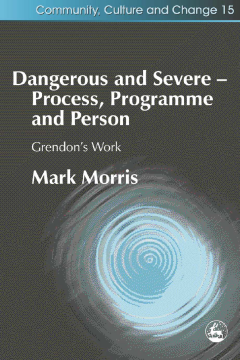
Additional Information
Book Details
Abstract
HMP Grendon hosts the UK's only prison-based therapeutic community, inhabited by around 200 residents, almost all convicted of crimes against the person, and about half of whom have killed. This is an inside account of the work, and the theory behind the work, carried out at a prison which not only exemplifies the best in prison philosophy, but also a pioneering approach to the treatment of psychopaths.
Previously the Director of Therapies at Grendon, Mark Morris provides a unique insight into the work of this experimental prison regime. He tracks its history from the 1950s, and describes how its approaches have evolved over the decades. He explores Grendon's status as a provider of a psychological therapy, and positions its treatment process as a therapeutic community, explaining why this approach is so appropriate and effective for helping prisoners with personality disorders, and how the prison environment can help in the rehabilitation of offenders.
This book is an inside account of the work, and the theory behind the work, carried out at a prison which not only exemplifies the best in prison philosophy, but also a pioneering approach to the treatment of psychopaths... This is a book for anyone interested in therapeutic communities, in constructive prison regimes, in treatment programmes for DSPD people and for anyone who looks for hope within prisons.
Prison Service Journal
Dr. Morris' book should be of considerable interest to practitioners and students alike. Case illustration provides illuminating examples of offenders' histories with their subsequent engagement in the program. It is refreshing indeed, to se the term "therapeutic community" spelled out and not depreciated by its upper case initials.
Therapeutic Communities Journal
Mark Morris is Consultant Psychiatrist in Psychotherapy at the Portman Clinic, Tavistock and Portman NHS Trust. He previously worked as Director of Therapy at HMP Grendon, Buckinghamshire.
Table of Contents
| Section Title | Page | Action | Price |
|---|---|---|---|
| 1 Introduction: Still standing? | |||
| Theo Schilderman | |||
| 2 Emerging stronger? Assessing the outcomes of Habitat for Humanity’s housing reconstruction programmes following the Indian Ocean tsunami | |||
| Victoria Maynard, Priti Parikh, Dan Simpson, and Jo da Silva | |||
| 3 Looking back at agency-driven housing reconstruction in India: Case studies from Maharashtra, Gujarat, and Tamil Nadu | |||
| Jennifer Duyne Barenstein with Akbar Nazim Modan, Katheeja Talha, Nishant Uphadyay, and Charanya Khandhadai | |||
| Part I Asian case studies | |||
| 4 A market-based programme to improve housing in the mountains of northern Pakistan – Addressing seismic vulnerability | |||
| Nawab Ali Khan and Charles Parrack | |||
| 5 India: Gandhi Nu Gam, an example of holistic and integrated reconstruction | |||
| Yatin Pandya with Priyanka Bista, Abhijeet Singh Chandel, and Narendra Mangwani | |||
| 6 Challenges for sustainability: introducing new construction technologies in post-tsunami Sri Lanka | |||
| Eleanor Parker, Asoka Ajantha, Vasant Pullenayegem, and S.Kamalaraj | |||
| 7 Reconstruction in Vietnam: less to lose! Examples of the experience of Development Workshop France in Vietnam | |||
| Marion MacLellan, Matthew Blackett, Guillaume Chantry, and John Norton | |||
| 8 Integrated people-driven reconstruction in Indonesia | |||
| Annye Meilani, Wardah Hafidz, and Ashleigh King | |||
| Part II Latin American case studies | |||
| 9 Guatemala: knowledge in the hands of the people | |||
| Kurt Rhyner | |||
| 10 Honduras: ‘La Betania’, resettlement of a flooded neighbourhood | |||
| Kurt Rhyner | |||
| 11 Nicaragua: reconstruction with local resources in an isolated region | |||
| Kurt Rhyner | |||
| 12 A roof for La Paz: reconstruction and development in El Salvador after the 2001 earthquakes | |||
| Claudia Blanco, Alma Rivera, Jacqueline Martínez, and Jelly Mae Moring | |||
| 13 Peru: building on the vernacular | |||
| Theo Schilderman and Max Watanabe | |||
| 14 Conclusion | |||
| Theo Schilderman, Eleanor Parker, Matthew Blackett, Marion MacLellan, Charles Parrack, and Daniel Watson | |||
| Back Matter (Appendices|Index) |
